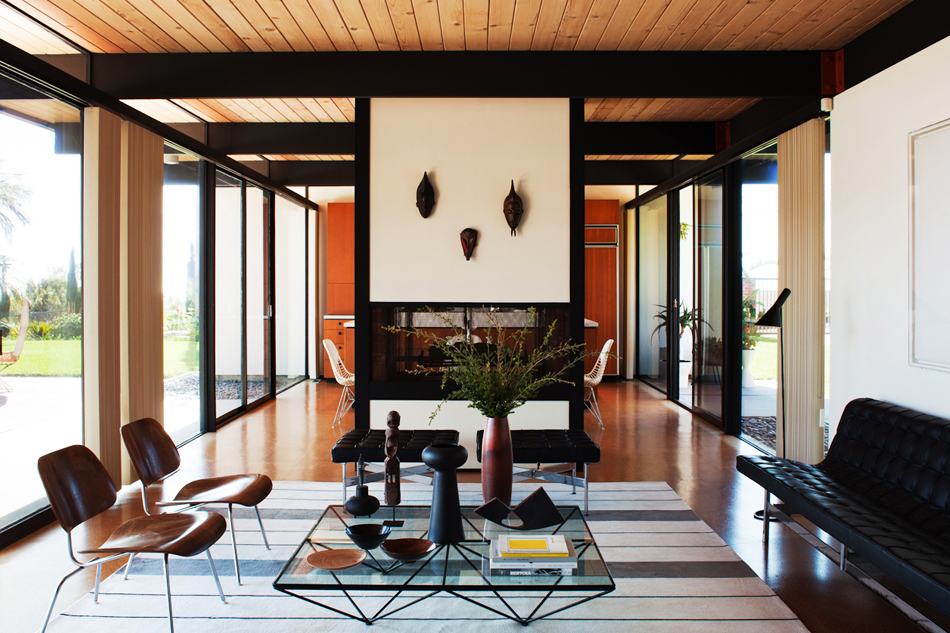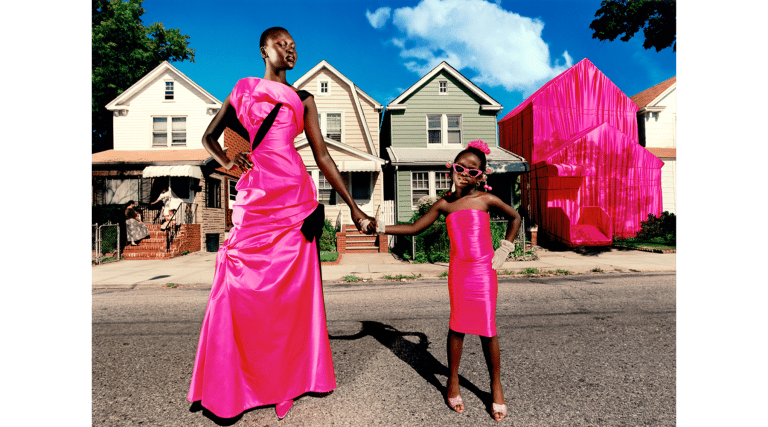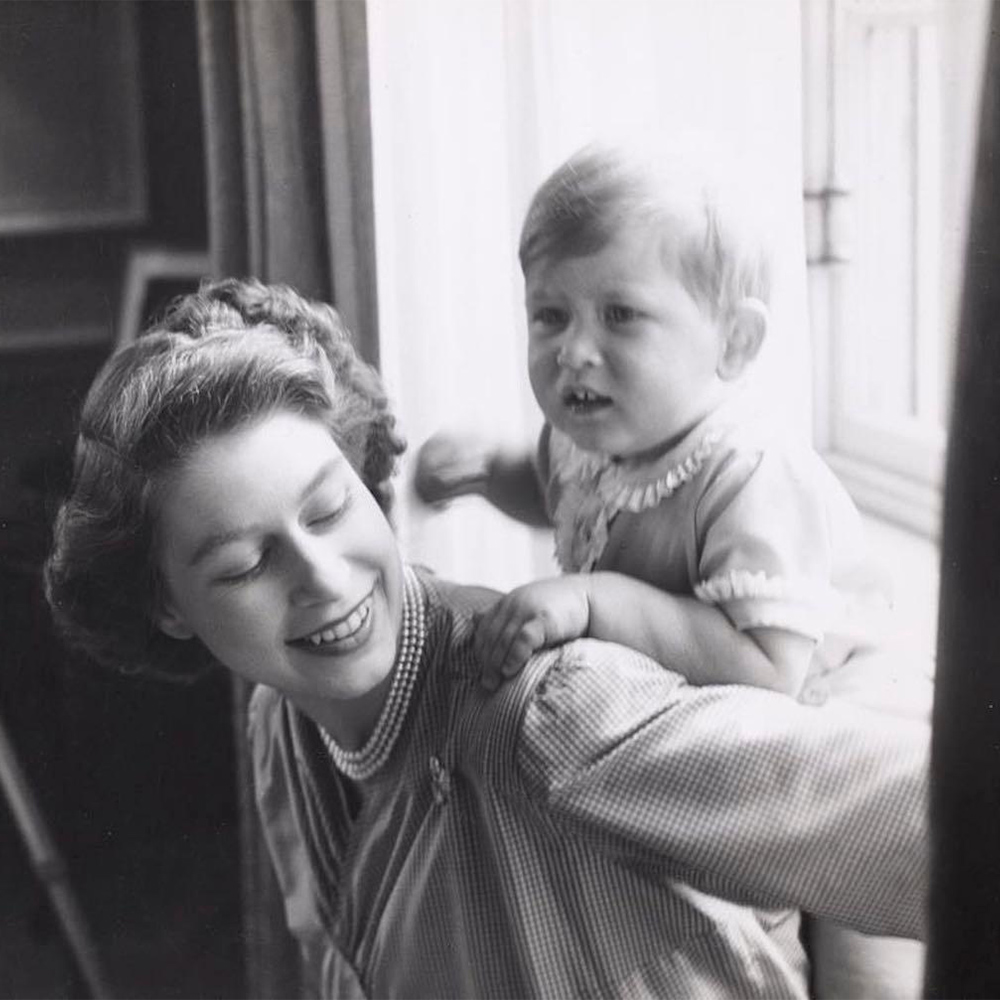
August 2013The photographer Roger Davies artistically captures interiors and exteriors. Above: Davies lives with his wife and son in the Laurel Canyon section of L.A. All photos courtesy of Roger Davies, unless otherwise noted
Basically it’s all my dad’s fault,” Roger Davies says of launching his photography career. “He worked on the railways but loved photography. Growing up in Derbyshire, [England], there was always a darkroom in our laundry room, which he devised by covering the windows with a black sheet. The wet prints would hang from the ceiling on the old wooden clothes rack.”
Fast-forward to New York, where Davies moved after college. Here he had a chance street encounter with Mariuccia Casadio, then the fashion editor of Interview, who introduced him to somebody, who introduced him to somebody who gave him a job. A career in photography was born. “It’s a good New York story,” he says.
To date, his work has appeared in Architectural Digest, Elle Decor, Veranda, House Beautiful, Condé Nast Traveller UK, French AD and Art Review, and his clients have included Restoration Hardware, Baker, Target and Benjamin Moore. He has snapped the likes of Ellen DeGeneres and Portia de Rossi, Robert De Niro, Elton John, John Legend, Aaron Sorkin and Giorgio Armani, among others, and last year he shot the photos for Nate Berkus’ book, The Things That Matter.
Davies lives in a 1920s cottage deep in L.A.’s Laurel Canyon with his wife, Deanna, and their eight-year-old son, Carlo. Recently he spoke with Introspective’s Susanna Salk about his early influences, most memorable photo shoots and favorite cameras.

The Wainscott, New York, home of the interior designer Eric Hughes, which Davies captured for Elle Decor, features a table and hanging lamp by Kartell, a sculpture by Pamela Sunday and a carpet by Madeline Weinrib.
Is there a photographer who inspired you in your early days?
As I began to get passionate about photography, my heroes were always photojournalists like Henri Cartier-Bresson, Robert Frank and André Kertész. They were masters of light and composition and created incredible bodies of work with quiet dignity and professionalism while always looking for inspiration in any form they could.
How did this affect your work at the time?
It gave me the idea that there could be a magic moment at any time, wherever you are. The conscious act of looking, as opposed to the passive act of seeing.
Tell us about one of your most unusual shoots.
A couple of years ago I had to shoot a bubbling volcano while hanging out of a helicopter in Hawaii for Condé Nast Traveller UK. We were low, and the pilot had taken the doors off for us. The noise of the helicopter and the heat coming up were intense.

Davies ranks a Hawaiian volcano as among the most unusual subjects he’s shot over the course of his career.

Davies only had a short window to shoot an 18th-century residence in Marrakesh, but the experience wound up counting among his most memorable assignments.
Of the hundreds of houses you’ve shot over the years, is there a particularly memorable one?
I was on assignment for Elle Decor in Marrakesh, and my bags never arrived, so we lost a day and had to push hard to get it done on the second day. It was a small riad near the souk in Marrakesh owned by a lovely American couple, Caitlin and Samuel Dowe-Sandes. On the rooftop at the end, as the sun went down, the homeowners made mojitos with mint fresh from the market. Not too bad.
What are some of your favorite places to travel?
I’m not particularly good to travel with on holiday, because I’m always turning up a side road or stopping to shoot something or waiting because I think something’s going to happen. If I’m alone, I think cities like Tokyo or São Paulo just explode visually, but if I’m with my family and just want to check things out, then I’d go to Big Sur any day. I just got back from Greece, which I’d add as another family favorite.
What kind of camera did you use when you first started out and what kind do you use now?
I started with 4×5 and Pentax 67s but now I use Hasselblads with Phase backs, a Fuji X-Pro1 and Canons. And my iPhone! I love all cameras: land cameras, SX-70s, Contax g2s, T2s, 67s, M6s, Xpans, Toyos, Alpas . . . I could go on, but that’s a fetish, really. To be honest, I think people get too worked up about the camera —the thought behind the image, developing a good eye and learning how to use light are far more important.
How has technology impacted your art?
While working, I love how immediate digital is, how easy it is to see a shot progress or the light change and then immediately share those images. When shooting film, a photographer’s style was often more shaped by the choice of film stock, the processing and the printing that created the quality of the image. Those decisions are now made on the computer. I feel lucky to have learned my craft shooting film: The principles of layering light on a sheet of 4×5 very much inform how I shoot digitally now. I do miss the collection of Polaroids from the shoots, however.









